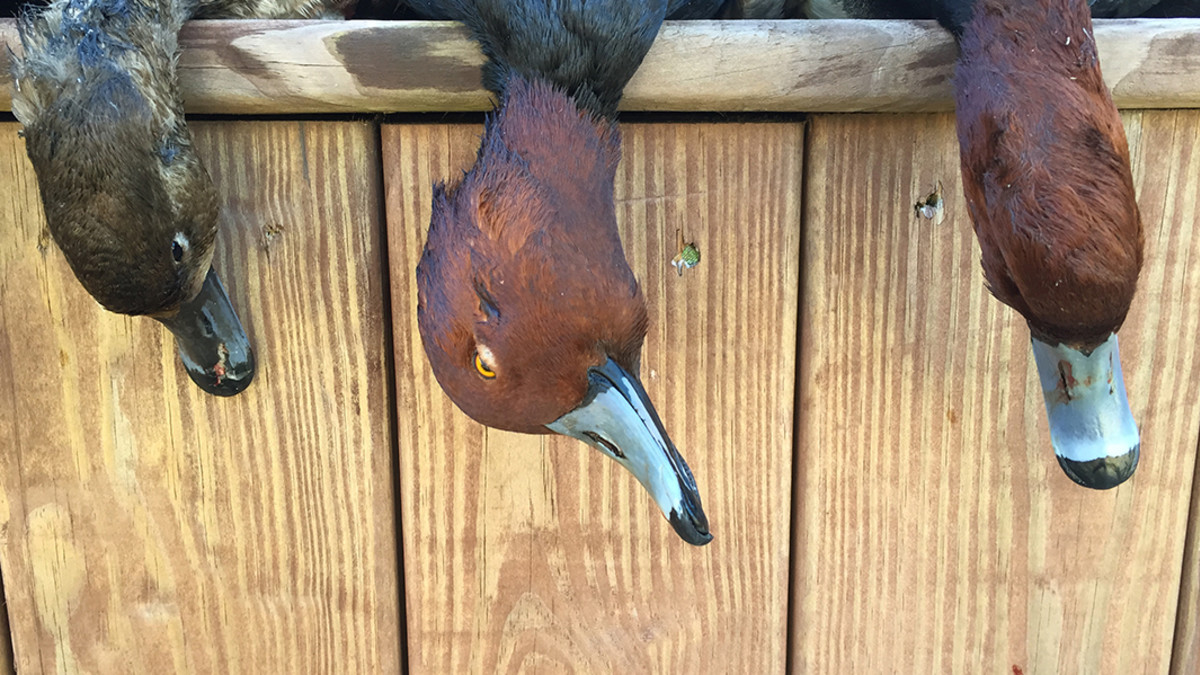
Diver ducks, also known as diving ducks, are capable of diving beneath the water’s surface in order to feed. They are generally associated with larger and deeper waterways than puddle ducks.
Due to the fact that they have proportionately smaller wings than puddle ducks, they are incapable of lifting directly into the air from a standstill and must run across the water’s surface in order to take flight. When flying, they have much shorter and faster wingbeats than puddle ducks.
They are very clumsy on land but are adept underwater swimmers, with legs positioned toward the rear of their bodies and relatively large feet. Many divers can feed at depths of 20 to 30 feet, with the king eider going all the way down to 150 feet. Diver ducks are primarily meat eaters, consuming small fish, clams, crayfish, aquatic insects, snails, etc. In general, they’re flesh is inferior to that of geese and puddle ducks. It can be oily and strong, and often tastes of fish.
A few diver duck species, including canvasbacks and redheads, do have predominantly plant-based diets. These are the best-tasting diver ducks. Greater and lesser scaup also have passable flesh, despite their protein-rich diets. Other diver species, particularly mergansers, are nearly unpalatable and should be avoided.
Divers are generally not as spooky as geese and puddle ducks. If a duck lands among your decoys and doesn’t flush when you stand up, there’s a good chance it’s a diver.
Unlike other waterfowl, these birds don’t circle your spread from high above while scrutinizing every square inch for trouble. Instead, they’re likely to lock on to a spread of decoys from a distance and, if they buy it, come directly in for a landing.
Despite their relative lack of wariness, decoy spreads set for divers need to be accurate. It is not smart to think that you can just set out a bunch of mallard decoys and lure in some divers. For maximum success, you need to use appropriate decoys, divers for divers and set your spread in a way that mimics the ways in which real birds sit on the water.
While divers can often be found close to shore, a serious hunter will find himself chasing birds that are in deep water far from land. Basic puddle duck anchoring systems by which each decoy is attached to a hunk of lead by a short cord will not cut it. Instead, 2 or 3 dozen diver decoys are clipped to main lines that are 60 to 70 yards long.
The mainlines are then anchored and the floating decoys are allowed to play out in a downwind direction. A typical spread might include hundreds of decoys. It can be cold, expensive work to create the perfect diver setup in the freezing predawn darkness of a December morning.
Being far from shore also means that you can’t always build a standard cattail blind and stand on firm ground. If you want to get serious about diver ducks, you need to rig up a floating blind that can be driven or towed into position.
Setups vary according to budgets and the severity of the weather one is likely to encounter, but layout boats, sculling boats, and low-lying john boats can all be used effectively. When hunting diver ducks over decoys, use a 12-guage shotgun with a modified choke. Shoot 3” shells with 2 or 3 shot.




